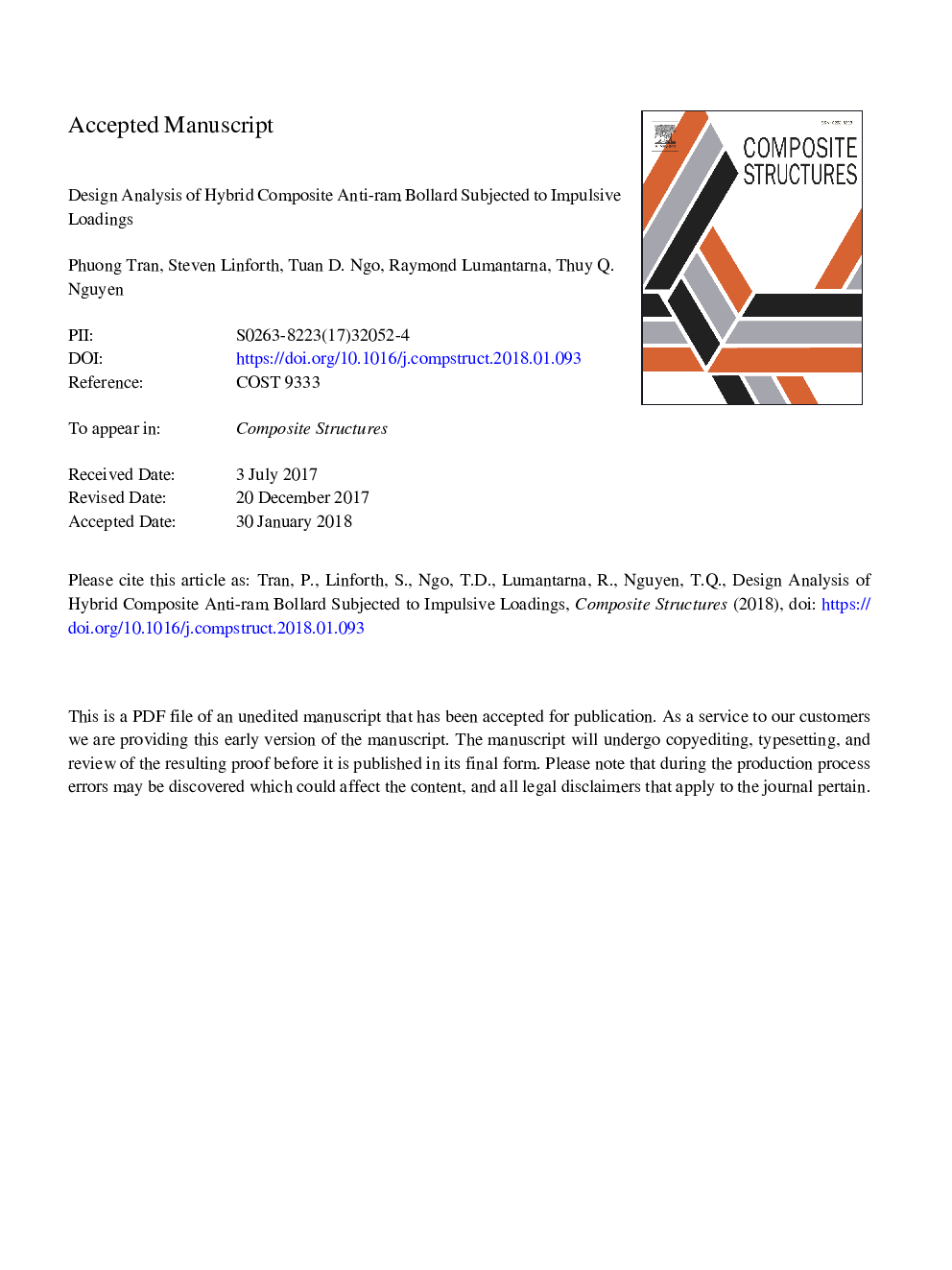| Article ID | Journal | Published Year | Pages | File Type |
|---|---|---|---|---|
| 6704106 | Composite Structures | 2018 | 29 Pages |
Abstract
Series of terrorist attacks in Europe recently using vehicles lead to significant demands to improve the impact resistance of current anti-ram bollards by replacing conventional materials with composite materials. Composite bollards comprised of an outer steel hollow tube, an inner aluminium alloy hollow tube and a crushable foam core, are studied against conventional steel ones. The current design of bollard barrier systems is based on the crash-test certification, which often leads to an overly conservative design with excessively stiff bollards. In addition, the foundation of the bollard system is designed against unnecessarily high reaction forces. In this work, the performance of fixed bollard systems is optimised using the numerical approach which incorporates the rate-dependent effect of the hybrid metal/Divinycell H250 PVC foam cores. The bollard deflection is used as the indicator to quantify the relative impact resistance of the system along with the recorded peak reaction forces. The results indicate that an improvement, in the form of increased resistance and reduced reaction forces requirement, of the typical hollow tube system can be achieved by incorporating other energy dissipating materials in the bollard structure. This study highlights the importance of an optimised composite bollard by reducing the reaction force transfer requirement.
Related Topics
Physical Sciences and Engineering
Engineering
Civil and Structural Engineering
Authors
Phuong Tran, Steven Linforth, Tuan D. Ngo, Raymond Lumantarna, Thuy Q. Nguyen,
